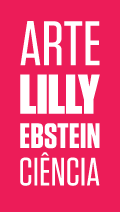A Escola Lette-Verein
E A EMANCIPAÇÃO DAS MULHERES
-
 Lilly Ebstein | Clique para ver +
Lilly Ebstein | Clique para ver + -
 História | Clique para ver +
História | Clique para ver + -
 Lette-Verein | Clique para ver +
Lette-Verein | Clique para ver +
Fundada em Berlim em 1866, a Escola Lette-Verein oferecia cursos profissionalizantes para mulheres em um período no qual o processo de emancipação das mulheres estava começando.
A Escola Lette-Verein foi fundada em Berlim em 1866 por Wilhelm Adolf Lette como uma associação para promover a “aquisição de competências pelo sexo feminino”, sob o protetorado da princesa Viktoria, que foi casada com o Kaiser Friedrich III. Incialmente eram cursos que ensinavam a ser professora, governanta e confecicionar e vender produtos em um bazar da própria escola.
Em 1872, Anna Schepeler-Lette, filha de Wilhelm, assumiu a direção da Lette-Verein (nome dado em 1868 após a morte de Wilhelm) e implantou um modelo pioneiro de formação profissional [1], com cursos técnicos tais como: Comércio, Ciências Domésticas, Ensino Fotográfico, Telegrafista e Escola de Tipógrafas. Depois foram criados cursos de Encadernação de Livros e de Metalografia. A diretora seguinte, Elisabet Kaselowsky, que assuniu em 1897, construiu o prédio na Viktoria-Luise Platz – onde a escola se localiza até hoje – com apoio do Estado e inaugurado em 1902.
A educação e a profissionalização das mulheres percorreu um longo caminho até a integração a todos os níveis educacionais e não foram poucas as resistências. Houve relutância em aceitar as mulheres em profissões como, por exemplo, a de telegrafista. Posteriormente, a Lette-Verein passou a oferecer também cursos de Pedagogia, Psicologia, Alemão, Ensino para Jovens, Educação Física e Cuidados de Enfermagem.
Foi em meados do século 19 que teve início o movimento de emancipação das mulheres na Europa: trabalho assalariado, autonomia civil, direito à instrução e participação na política [3] “Tornou-se óbvia a mudança na posição e nas expectativas sociais das mulheres durante as últimas décadas do século XIX, embora os aspectos mais visíveis da emancipação feminina ainda estivessem, em larga medida, confinados às mulheres das classes médias”, escreveu Eric Hobsbawm [4]. Entre estes aspectos, os mais notáveis foram a campanha das sufragistas em prol do direito das mulheres ao voto e a expansão da educação secundária para as meninas.
A Alemanha foi um dos países onde o aumento no número de escolas secundárias se deu com mais força: em 1910 cerca de 250 mil meninas frequentavam o ensino secundário. Foi em 1900 que as mulheres começaram a ingressar na universidade. Excetuando a carreira de Medicina, em 1908 apenas 103 mulheres haviam se formado em universidades na Alemanha. Em 1914 havia entre 4.500 e 5.000 mulheres universitárias na Alemanha, França e Itália. A educação das mulheres se tornou mais frequente após a Primeira Guerra Mundial.
A história da escola Lette-Verein e a trajetória de Lilly Ebstein são emblemáticas deste processo de emancipação das mulheres entre meados do século 19 e início do 20. De 1890 a 1918 a Lette-Verein mudou bastante o seu perfil, de uma associação mantida pela ajuda voluntária de sócios a uma instituição reconhecida pelo Estado. E a criação de postos para mulheres na sociedade tornara-se já uma tradição reconhecida.
[1] Im Blick: Die fotografin ...aber was noch? Frauenberufe im Lette-Verein 1866-1982, de Doris Obschernitzki e Karin Weber-Andreas, Berlin, 1991. e Obschernitzki, Doris. Der Frau ihre Arbeit!. Edition Hentrich Berlin: Berlin, 1987.
[2] Obschernitzki, Doris. Der Frau ihre Arbeit!. Berlin, Edition Hentrich Berlin, 1987 e Doris Obschernitzki, Doris e Weber-Andreas, Karin. Im Blick: Die fotografin ...aber was noch? Frauenberufe im Lette-Verein 1866-1982. Berlin, 1991.
[3] Fraisse, Geneviève e Perrot, Michelle. “Introdução: Ordens e Liberdades”. In: Perrot, Michelle e Duby, George (org.). História das Mulheres. O Século XIX. Edições Afrontamento.
[4] Hobsbawm, Eric J. A Era dos Impérios 1875-1914. São Paulo, Paz e Terra, 1988, pp. 284-287.
Lilly Ebstein Lowenstein (1897-1966) viveu entre a ciência e a arte, desenhando e realizando fotografias nos campos da medicina e da zoologia. Em seu trabalho, Lilly conjugava o conhecimento técnico da fotografia e do desenho, o estudo das ciências e um notável talento estético. Nascida na Alemanha, ela estudou na Escola Lette-Verein em Berlim entre 1911 e 1914. Em 1925 imigrou com o marido e dois filhos para São Paulo. Em 1926, tornou-se desenhista e fotomicrógrafa da Seção de Desenho e Fotografia na Faculdade de Medicina (USP, a partir de 1934), da qual seria chefe por trinta anos a partir 1932. Entre 1930 e 1935 Lilly foi colaboradora do Instituto Biológico de Defesa Agrícola e Animal, principalmente da sua Seção de Ornitopatologia. Uma vida com arte dedicada à pesquisa e difusão da ciência.

